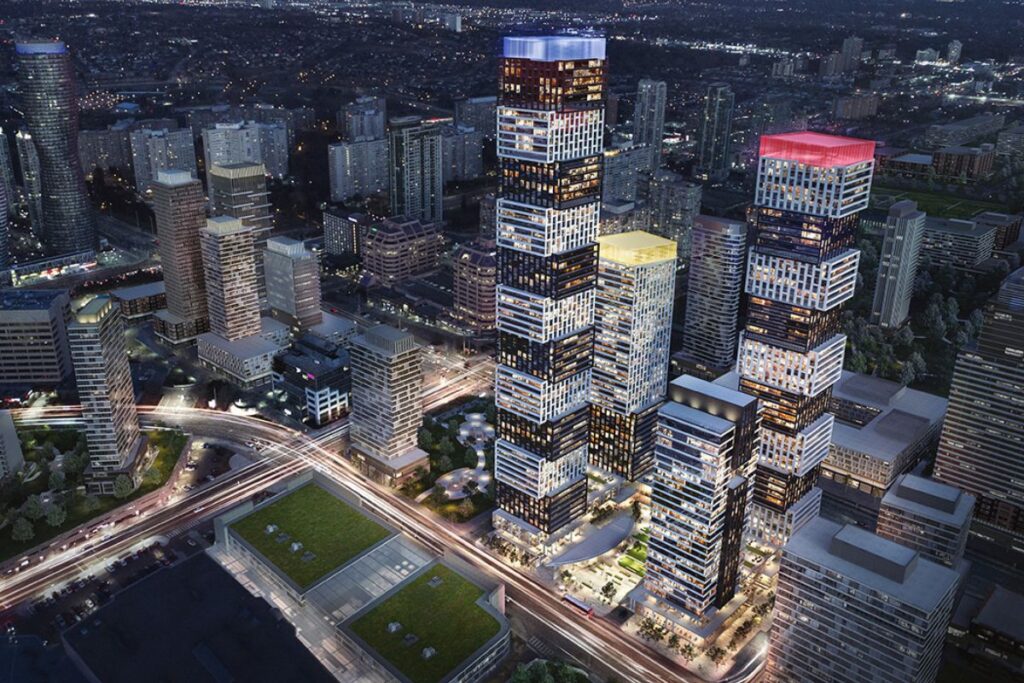
Downtown Mississauga’s Urban Evolution
The City of Mississauga is at the start of remarkable growth, with the Downtown Mississauga designated for remarkable Growth Centre by the Province of Ontario.
The Downtown Mississauga Growth Plan aims to achieve a minimum growth density of 200 residents and jobs per hectare by 2031. This transformation includes four unique downtown character areas: Downtown Core, Downtown Fairview, Downtown Cooksville, and Downtown Hospital, collectively known as Downtown Mississauga, stretching between Highway 403 and the Queen Elizabeth Way.
The journey began with the Downtown21 Master Plan in April 2010, and now a new guiding document, the Downtown Strategy, is in development. Building on the successes of Mississauga21, this strategy will provide a detailed vision for the future of the downtown core, guiding growth for the decades ahead and ensuring Mississauga’s place as a pioneer in urban development.
Ambitious Growth Targets in Downtown Mississauga
Downtown Mississauga is set to undergo a remarkable transformation with ambitious growth targets. By 2031, the city aims to achieve a minimum gross density of 200 residents and jobs combined per hectare within the downtown core. However, Mississauga is going above and beyond, targeting a gross density between 300 and 400 residents and jobs per hectare.
The proposed build-out of the Downtown21 Plan is even more impressive, with the potential to achieve a 1:1 population to employment ratio. By 2041, it is estimated that Downtown Mississauga can accommodate 70,000 jobs and 70,000 residents across its four character areas.
Mississauga’s population is expected to grow by 22% to 878,000 by 2041, with a 14% growth in the overall youth demographic. While population growth will align with job growth, the region is forecasted to add 104,000 more jobs, reaching a total of 552,000 jobs by 2041. This growth will drive demand for new homes and commercial developments, particularly near key transit nodes and major roads.
The Downtown Mississauga Growth Plan’s ambitious targets position the city as a robust and competitive region within the Greater Toronto Area, rivaling Toronto’s downtown core. The vision being realized in Downtown Mississauga will not only shape the city’s future but also influence how people work and live across the entire GTA.
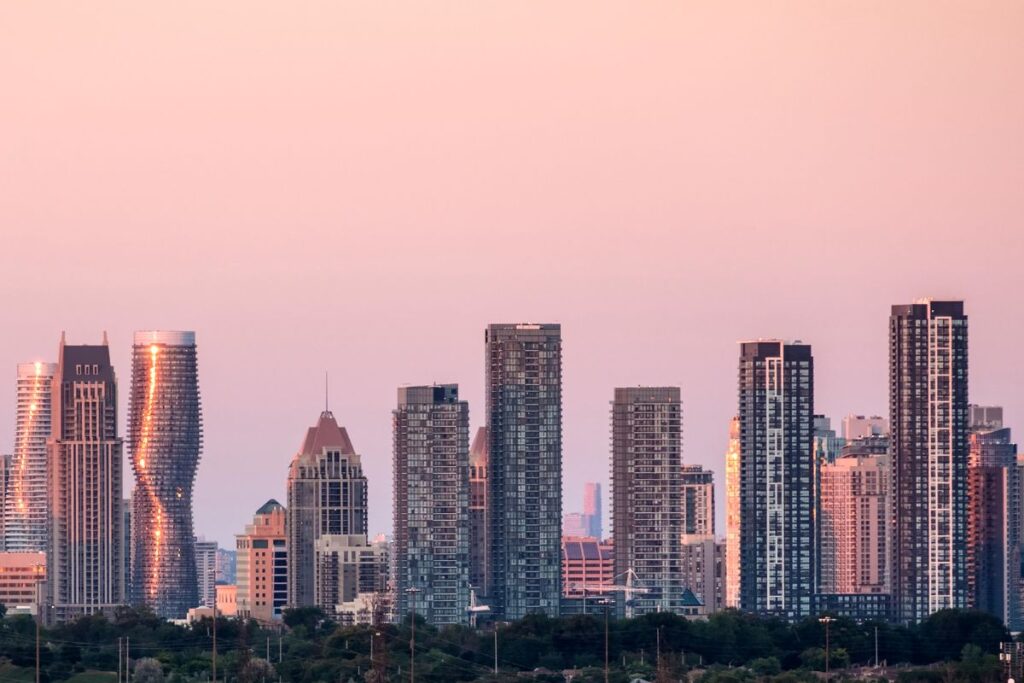
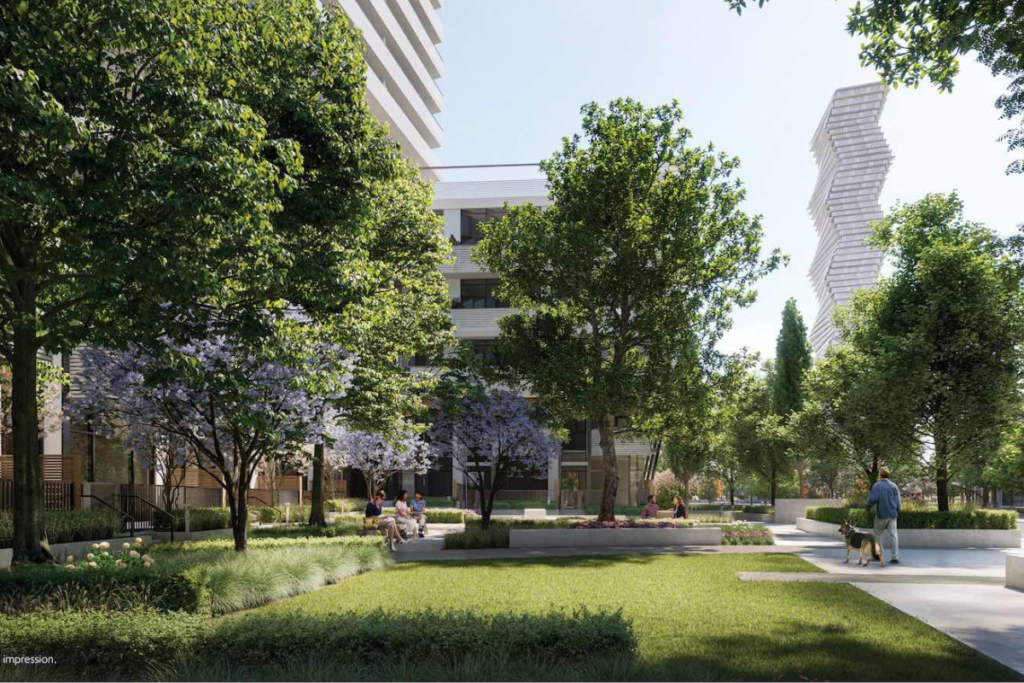
A Vision for the Future of Downtown Mississauga
The future of Downtown Mississauga is set to usher in a more vibrant, walkable core, enhancing the overall urban experience. The goal is to transform streets into welcoming spaces, encouraging people to stroll, shop, dine, and gather in public squares, urban parks, and cultural venues.
While the downtown core’s vision revolves around creating greater density through tall condo structures, offering a mix of commercial and civic uses, a significant part of Mississauga’s evolution is centered on reducing reliance on cars and fostering a pedestrian-friendly, active outdoor lifestyle.
This shift towards a more sustainable urban environment will entail the creation of new infrastructure designs, including cycling lanes on Living Arts Drive and the introduction of an LRT (Light Rail Transit) system within the downtown area, aimed at decreasing car dependency. To drive these changes forward, the City is in the process of revitalizing the Mississauga Downtown21 Plan with the launch of the “Downtown Strategy.”
The Downtown Strategy is poised to build upon the successes of the Mississauga21 Plan, offering a contemporary and enhanced vision that will steer growth in the coming decades. To gather insights and feedback from residents, the City is conducting online surveys, inviting their input on the desired changes for Downtown Mississauga’s future.
The Strategy encompasses three crucial phases:
Phase 1: Identifying the strengths of the downtown core, conducted during the summer and fall of 2019.
Phase 2: Defining the future for the downtown, expected to take place between winter and spring 2020. This phase will identify opportunities and future possibilities for the downtown.
Phase 3: Determining the precise measures for success and outlining the steps needed to achieve the vision for Downtown Mississauga, set to occur during the summer and fall of 2020.
The Downtown Strategy aims to create a comprehensive vision and plan for Downtown Mississauga, evaluating its strengths, opportunities, future needs, and providing a roadmap for achieving this exciting vision.
Residential and Employment Growth in Vibrant Mississauga
Mississauga has firmly established itself as the third largest city in Ontario and the sixth largest in all of Canada. With rapid growth in both residential and employment sectors, it’s one of the fastest-developing cities in the nation.
Currently, over 722,000 people call Mississauga home, residing in more than 248,000 households. The city is experiencing a population increase of approximately 6,300 people per year, projected to reach a total of 878,000 residents by the year 2041.
In the past five years alone, Mississauga has attracted around 110,000 residents from various parts of Canada and beyond, drawn by the city’s appealing prospects.
Residential development is thriving, with roughly 60% of the city’s land designated for residential or mixed-use purposes. This growth trend includes a rise in high-rise condominium developments in Downtown Mississauga, resembling the skyline of its larger neighbor, Downtown Toronto.
One remarkable residential project underway is led by Oxford Properties and Alberta Investment Management Corp. (AIMCo). They are embarking on the development of the largest mixed-use downtown project in Canada, known as Square One District. This ambitious 52-hectare project around Square One Shopping Centre will feature 37 high-rise towers, offering a total of 18 million square feet of combined condo, office, retail, and green spaces.
Square One District isn’t just about buildings; it’s about creating a pedestrian-friendly environment. The Strand, a central component of the project, aims to provide over 18,000 residential units, a transit mobility hub connecting to the Hurontario LRT, parks, green spaces, and office facilities.
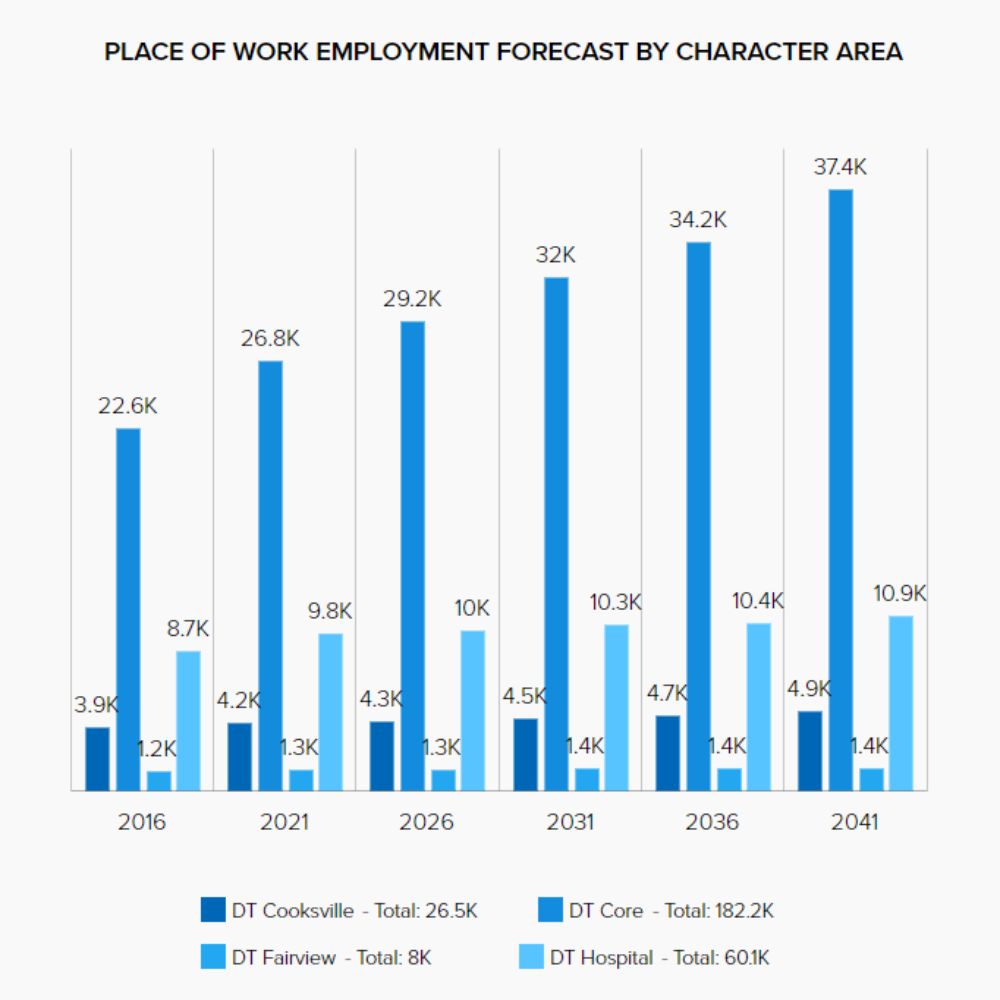
In addition, Camrost Felcorp’s EX2, known as The Exchange District, is set to become one of Downtown Mississauga’s newest neighborhoods, aligning with the city’s original vision outlined in the Downtown21 Master Plan. These developments exemplify Mississauga’s commitment to creating vibrant, mixed-use spaces that cater to both residents and businesses, ushering in a new era for the city.
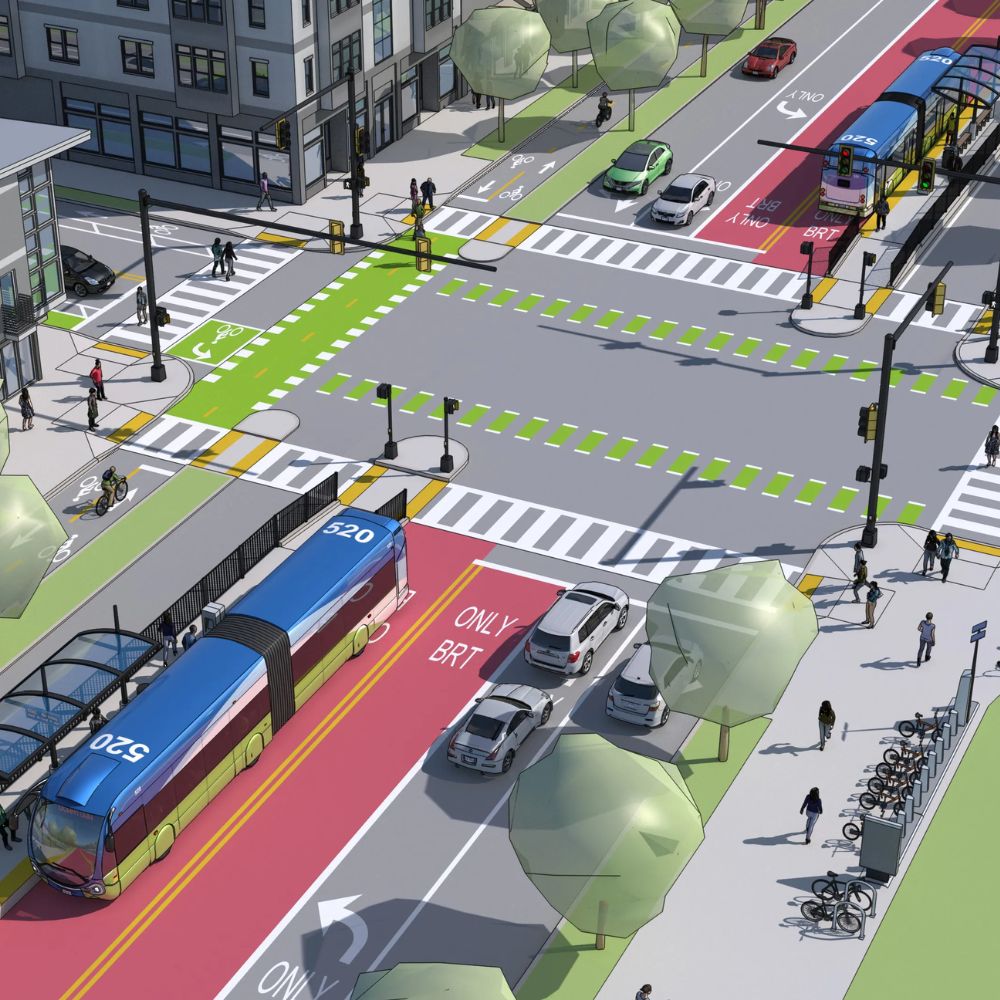
Enhancing Mobility in Mississauga: A Plan for Change
Mississauga grapples with a well-documented congestion issue caused not just by the volume of cars but also by infrastructure limitations hindering walkability. In response, the city introduced the Mississauga Transportation Master Plan, a strategic initiative aimed at alleviating traffic concerns and fostering a pedestrian-friendly downtown.
The core vision of this plan is to enable safe, easy, and efficient movement for all and everything, a response to the prevalent reliance on cars, accounting for 85% of weekday trips in Mississauga. On any given weekday, nearly 489,000 car trips contribute to road congestion, air quality concerns, and emissions.
Studies have underscored the negative impact of traffic congestion and pollution on businesses, transit networks, and the overall quality of life. Consequently, the Transportation Master Plan serves as a strategic response, charting a course to reshape how Mississauga residents commute in the coming decades.
Downtown Mississauga is set to embrace a vision featuring frequent transit services and high-order transit facilities connecting the entire city and neighboring municipalities. This proactive plan seeks to reduce congestion, mitigate pollution, and elevate mobility and quality of life for all Mississaugans.
Investing in Sustainable Mobility in Downtown Mississauga
Downtown Mississauga’s vision revolves around creating a more pedestrian-friendly and bike-friendly environment, alongside public transit options. The city is actively investing in new pedestrian walkways and crosswalks to connect residential and business areas within walking distance.
It’s fascinating to note that over 620,000 trips are taken each day in Mississauga, with distances of less than 5 kilometers—perfect for cycling. However, only 1% of trips are currently made by bike. Surprisingly, out of 98,000 people living within a 5-kilometer radius of their workplaces, just 3,000 choose to cycle to work.
Regarding walkability, less than a third of “walkable” commutes, those under 1 kilometer, are completed on foot. Around 100,000 trips that could be easily walked are instead taken by car or transit each day. Furthermore, only 2,000 people walk to work in the city out of 32,000 living within a 1-kilometer distance from their workplaces. This data underscores a discouragement in walking, particularly for short distances.
Resident surveys revealed that people are discouraged from walking due to an overall unpleasant walkable environment characterized by poor walking routes, unsafe intersections, and narrow walkways. Safety concerns and a general feeling of discomfort with these forms of travel act as significant barriers to walking. These issues stem from City infrastructure design and road planning, which the City is committed to addressing as part of its vision for the urban growth center by 2041.
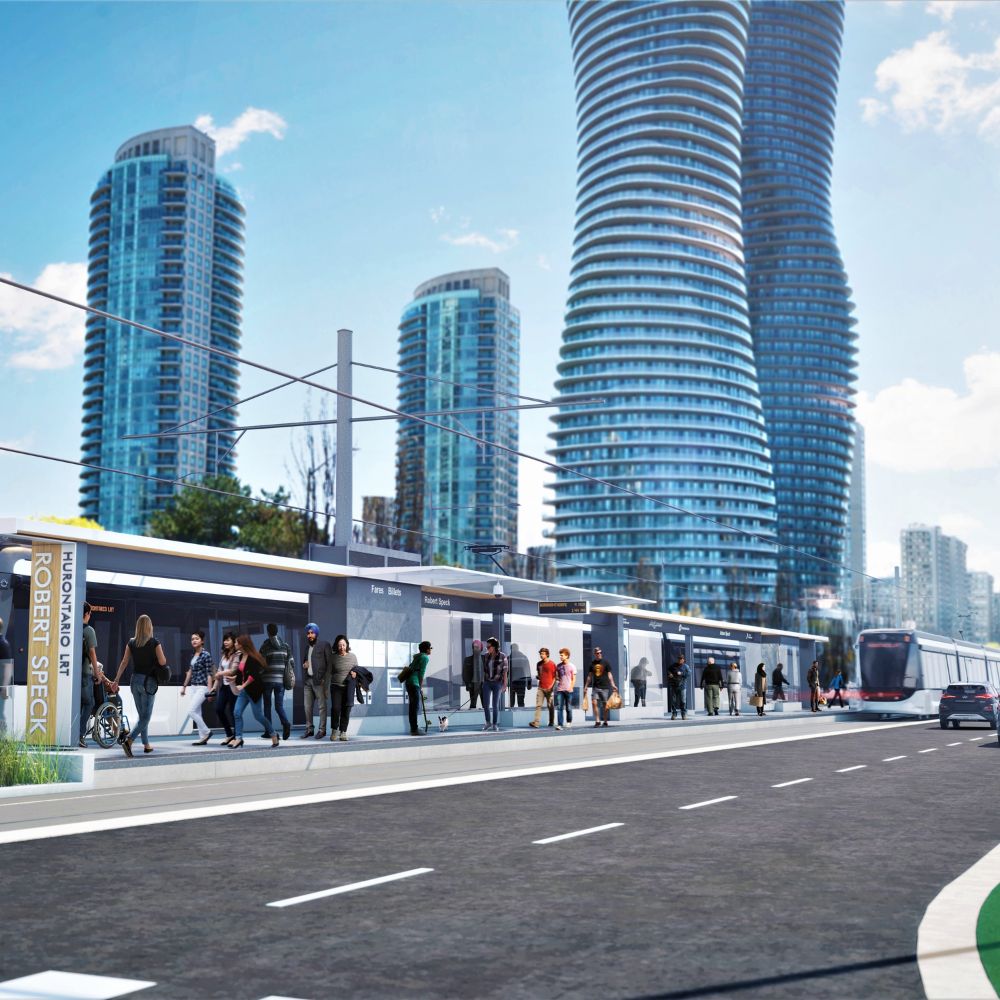
Education
Downtown Mississauga isn’t just a hub for residential and commercial development; it also boasts proximity to renowned educational institutions. The University of Toronto Mississauga campus and the Sheridan College Hazel McCallion campus are nestled at the heart of this thriving urban center.
These campuses collectively serve around 20,000 students, offering substantial potential for investors. Condo rentals in this area become highly attractive to both local and international students seeking convenient accommodation near their post-secondary institutions. The presence of these esteemed colleges enriches the urban landscape and opens up opportunities for property investment and rentals in this growing education-centric hub.
Downtown Mississauga: A Smart Investment Choice
Investing in Downtown Mississauga offers numerous advantages:
- Thriving Business Hub: With over 70 Fortune 500 companies, it’s Canada’s second-largest employment center, promising economic stability.
- Job Opportunities: The Toronto Pearson Airport’s job potential (700,000 jobs by 2035) enhances the local economy and attracts talent.
- Financial and Commercial Significance: As North America’s third-largest FIRE cluster, it’s a key player in finance, insurance, and real estate.
- Population and Job Growth: Anticipated 22% population growth by 2041 and the creation of 104,000 jobs provide a promising backdrop.
- Residential Expansion: Ongoing residential development, with 46 condo towers and 24,494 units planned for the next decade.
- Robust Rental Market: A 4% average rental appreciation rate and a low 1% vacancy rate support long-term investment.
- Transit Advancements: Forward-thinking transit projects like the Hurontario LRT enhance property values, offering a prime investment environment.
Downtown Mississauga’s growth potential, diverse appeal, and well-planned development make it a wise choice for investors seeking long-term portfolio growth. Check out some investments HERE
